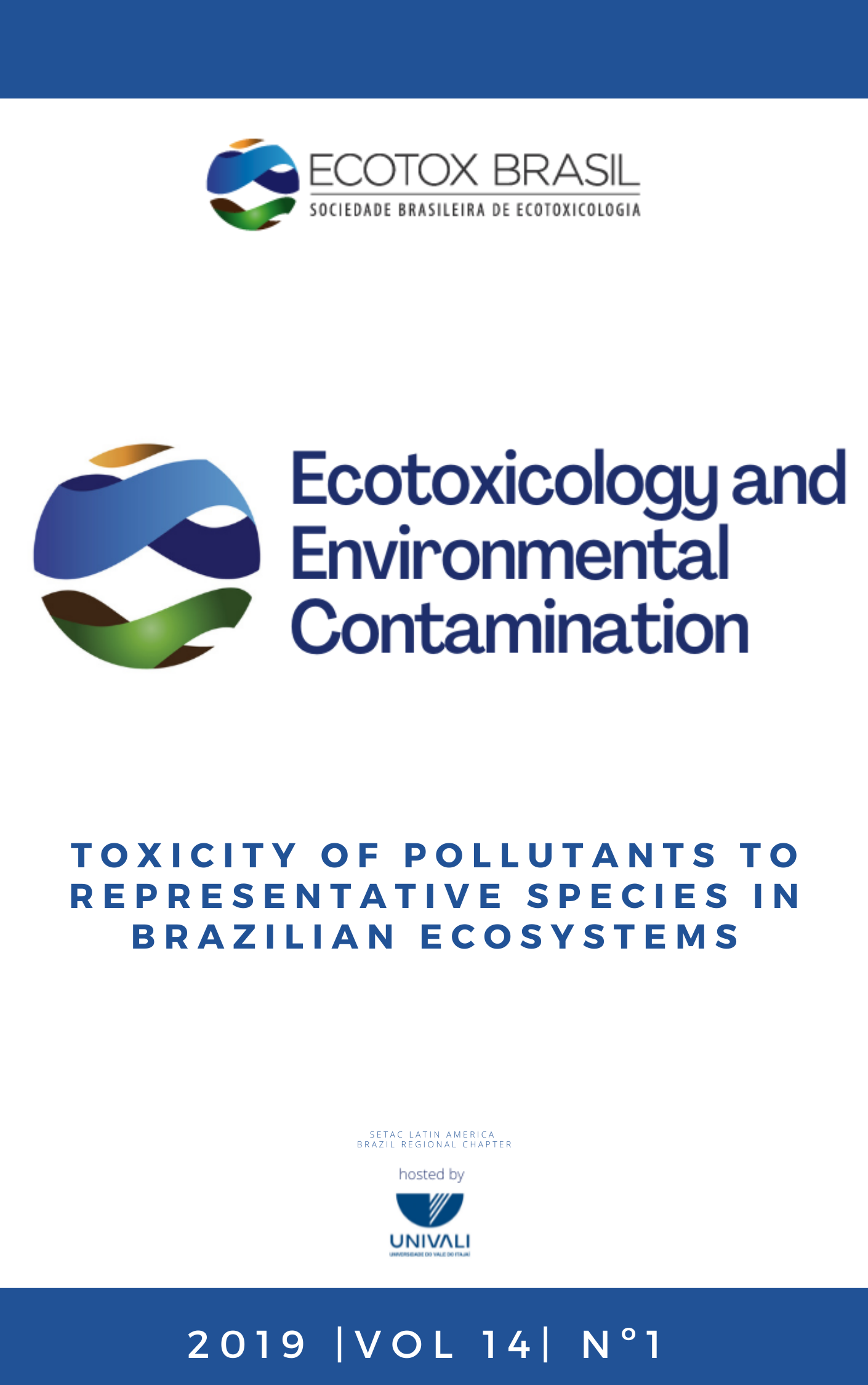Electron beam irradiation of pharmaceuticals aiming at toxicity reduction: a binary mixture of fluoxetine and propranolol
DOI:
https://doi.org/10.5132/eec.2019.01.06Abstract
Significant evidence is available in the literature justifying the search for treatment technologies or process combinations to improve the decomposition of dozens of pharmaceuticals in wastewater. Conventional processing techniques are insufficient in removal of the pharmaceuticals, for having resistant waste and low biodegradability. Electron beam irradiation (EBI) may play an important role in this context, and relatively low doses have been reported for such purposes. The objective of this study was to apply the process of irradiation with electron beam in order to reduce the toxic effects of fluoxetine, propranolol, and a binary mixture of these pharmaceuticals in aqueous solution. Ecotoxicological tests conducted in two model organisms, Daphnia similis microcrustacean, and Vibrio fischeri bacterium. It was observed that D. similis was more sensitive to the pharmaceuticals and binary mixture, when compared to V. fischeri. When EBI was applied, all doses showed significant reduction of toxicity for D. similis, and the opposite for V. fischeri, when only 5.0 kGy showed a significant reduced of toxicity for the pharmaceuticals and binary mixture. 5.0 kGy was the best removal efficiency for toxicity, approximately 80% for D. similis and 20% for V. fischeri.
Downloads
Published
How to Cite
Issue
Section
License
Copyright © 2006 ECOTOX-Brasil
Copyright notice: It is a condition for publication that manuscripts submitted to this journal have not yet been published and will not be simultaneously submitted or published elsewhere. By submitting a manuscript, the authors agree that copyright for their article is transferred to the Sociedade Brasileira de Ecotoxicologia (ECOTOX-Brasil) if and when the article is accepted for publication. The copyright covers the exclusive rights to reproduce and distribute articles, including reprints, photographic reproductions or any other reproduction of a similar nature, including translations. No part of this publication may be reproduced, stored in a retrieval system or transmitted in any form or by any means, electronic, mechanical, photocopying, recording or otherwise, without permission of the publisher.
Notice: While every effort is made by the EEC, editors and editorial board to see that no inaccurate or misleading data, opinions or statements appear in this journal, they wish to make it clear that the contents of the articles and advertisements published herein are the sole responsibility of the contributors or advertisers concerned. Accordingly, the EEC, the editorial board and editors and their respective employees, officers and agents accept no responsibility or liability whatsoever for the consequences of any inaccurate or misleading data, opinion or statement.




